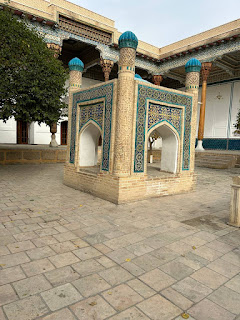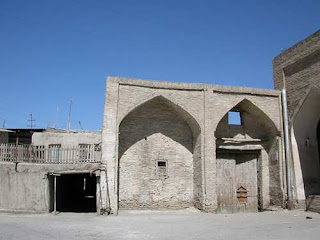Amir Olimxon's palace

So today we went to Amir Olimxon's palace ,so this plac in 1731 Khoja Sayyid Amir popularly nicknamed Kalon (“High”), was a Hanafi scholar, Sufi murshid and spiritual mentor of Bahauddin Naqshbandi. Sayid Amir was born in 1281 in the village of Sukhor (now the village of Yangikhet) in the Kagan region, in the village of hereditary potters. According to legend, he was tall and broad in shoulders. Penetrating eyes peered out from under furrowed brows. His skin was tan. His face was framed by a gray beard. He was very humble and gentle in manner. He was far from objection and stubbornness. Thanks to wrestling in his youth, he had a large physique, and was physically developed. As for spirituality, there was no person who would doubt his righteousness, because he behaved like an enlightened one who absorbed all the best that Sharia, Tariqa and Marifat contain.






